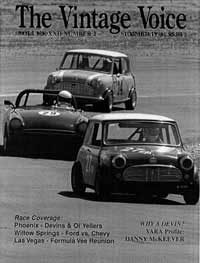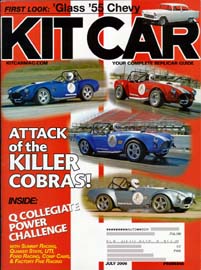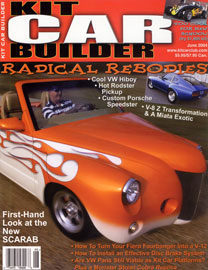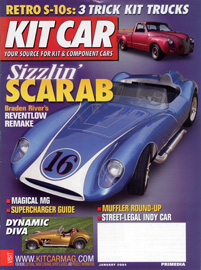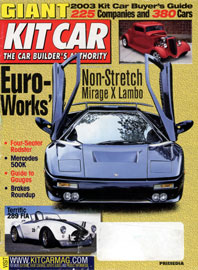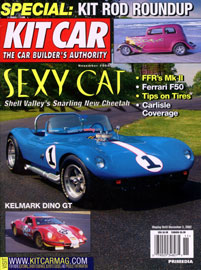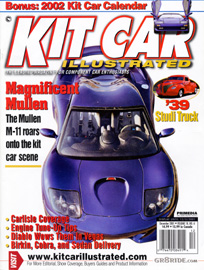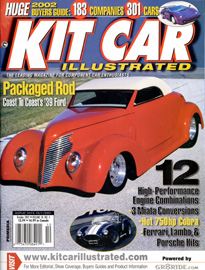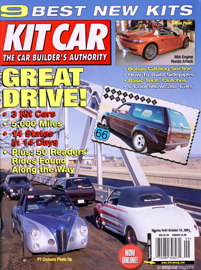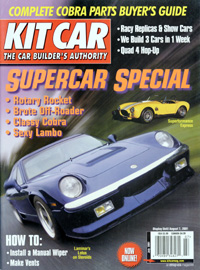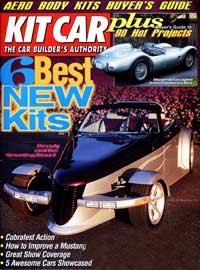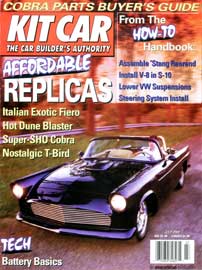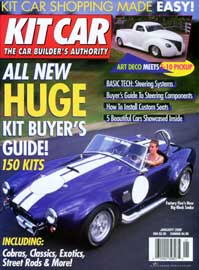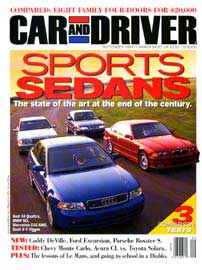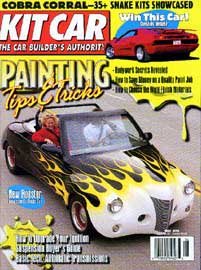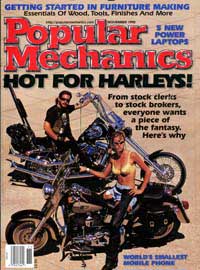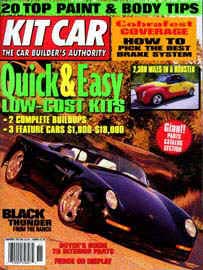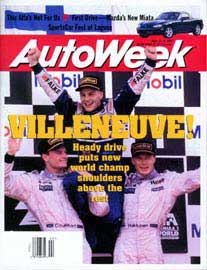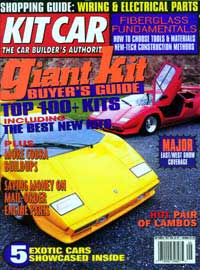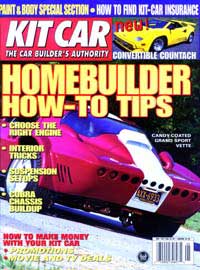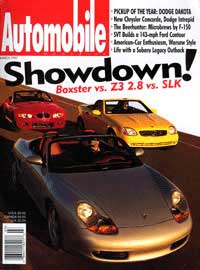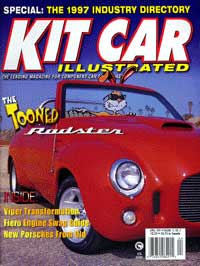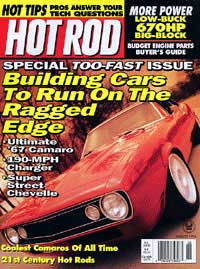What
is the Rodster®?
© Copyright Caroselli.
No images or text located anywhere on this site may be reused
or republished without expressed written permission from Rodster,
Inc., d.b.a.: Caroselli Design. The Rodster Street Rod design
is protected by
U.S. Patent # D450,284.
"Rodster®" is a registered
trademark of Caroselli Design. |
What
is the New York Post saying
about the Rodster® street rod?
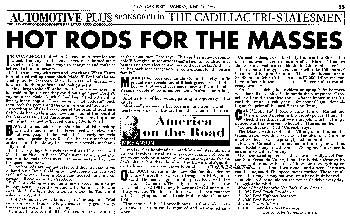
The New York Post
Monday, June 24, 1996
HOT RODS FOR THE MASSES
America
on the Road
by Mike Anson
I'm convinced that when the cave man invented the wheel, the guy in the cave next door immediately started to think about ways to change it and make it better. It's human instinct.
It's the same way with cars and Americans. When Henry Ford started rolling those black Model T Fords off the assembly line in Dearborn, Mich., boys started figuring out how to make them go faster and look different.
Things began to take off in the 1930's. That's when aspiring hot rodders figured out they could put that "new" Ford V8 engine in the Model A, which had been fitted with only a four-cylinder engine. They weren't "hot rodders" back then; both the people and the cars were called "hop ups."
According to Wally Parks, one of the original Southern California hot rodders and now chairman of the board of the National Hot Rod Association, "Somehow, the name 'hop up' got changed to 'hot rod' during (World War II)."
Back then, hot rodders and their loud, sinister-looking cars with fenders and hoods removed were viewed as outlaws, people to be avoided. The early hot rods were fast - probably too fast for the early mechanical brakes - and the skinny tires were not terribly reliable.In the early days, hot rods started as $10 or $25 used Model T or Model A Fords. While some were turned into beautiful hot rods, others were just noise beaters that gave the sport a bad name.Today hot rods are sophisticated and they are expensive. A hand-built Boyd Coddington masterpiece car can cost $500,000 or more. Even a plain Jane hot rod built in your garage will cost more than $25,000.
Still, hot rodding is enjoying a new respect and a surge in popularity. I recently visited with Johnnie Cate, who runs Mo & Curley's Rod Shop, in Knoxville, Tenn., and asked him about it.
"Hot rodding is now a family sport," he explains. "Rod runs are really family-style picnics. Nobody gets rowdy; the cars are worth too much money."
Pointing to a beautiful 1946 Ford sedan he was working on for a customer, Cate says, "This car has a new, dependable V-8 engine, automatic transmission, air conditioning, heater, and even electric windows and door locks. And look at that back seat area; there is room enough for the entire family."
Modern hot rods can handle stop-and-go city traffic or highway speeds and still look great. I once had a hot rod that would overheat in city traffic and had a strange wobble at 65 miles per hour. We've come a long way.
Another form of hot rodding gaining in popularity is the kit car.
Most really expensive hot rods are built from scratch - nearly every part of the car from the frame to the floorboards is either handmade or hand-finished. Assembling a kit car involves installing a swoopy-looking hot rod or sports car body on a more mundane auto chassis. Purists don't like it, but they do admit the kit cars are significantly less expensive and easier to build.
One such kit car is the new Rodster®, designed by Henry Caroselli of Caroselli Design in El Segundo, Calif. He has designed a fiberglass body with the classic lines of a hot rod. The body fits on - get this - the chassis of a 1982-1994 Chevy Blazer or GMC Jimmy sport utility vehicle. The Rodster® is a two-seat open roadster with the styling cues of hot rods built in the 1940s and 1950s.
"The beauty of this," Caroselli says, "is that underneath you have a car that can be repaired and maintained anywhere."
Caroselli's design uses the hefty frame of the Blazer, the doors, and even the entire interior of the Blazer. "It makes the work involved to assemble the Rodster® a lot easier."
He estimates the typical customer will take 100 hours of labor to get it up and running. The basic kit costs about $6,000 and a deluxe kit costs about $7,200. Of course, you have to factor in the cost of a used Blazer, unless you already own one.
For those aspiring hot rodders or aging baby boomers who don't like getting their hands dirty anymore, Caroselli will build a complete car - what is known in the kit car industry as a turnkey car - for about $20,000 depending on the price of the used Blazer or Jimmy.
Caroselli and I took a quick trip on Mulholland Drive in Los Angeles in the prototype car. (I have to check these things out - it's my job.) The first thing I noticed was that everyone who noticed the car smiled."To me, that says it all," Caroselli says.
The Blazer, with its 4.3 liter V-6 engine and automatic transmission wouldn't seem to be the ideal drivetrain for a hot rod, but it was surprisingly fast and nimble.
However, Caroselli, as a hot rodder himself, knows that some Rodster® buyers will want a V8 engine. "I designed it so that a V8 will fit," he says.
Over the twisting road that separates Hollywood from the San Fernando Valley, I put the Rodster® through its paces. Unlike many hot rods I have built, everything on this car worked. It had turn signals and a horn. The seats could be adjusted. The speedometer worked. These are all items that may or may not work on a hand-built hot rod.
Imagine, a dependable hot rod you could drive every day. It boggles the mind.
